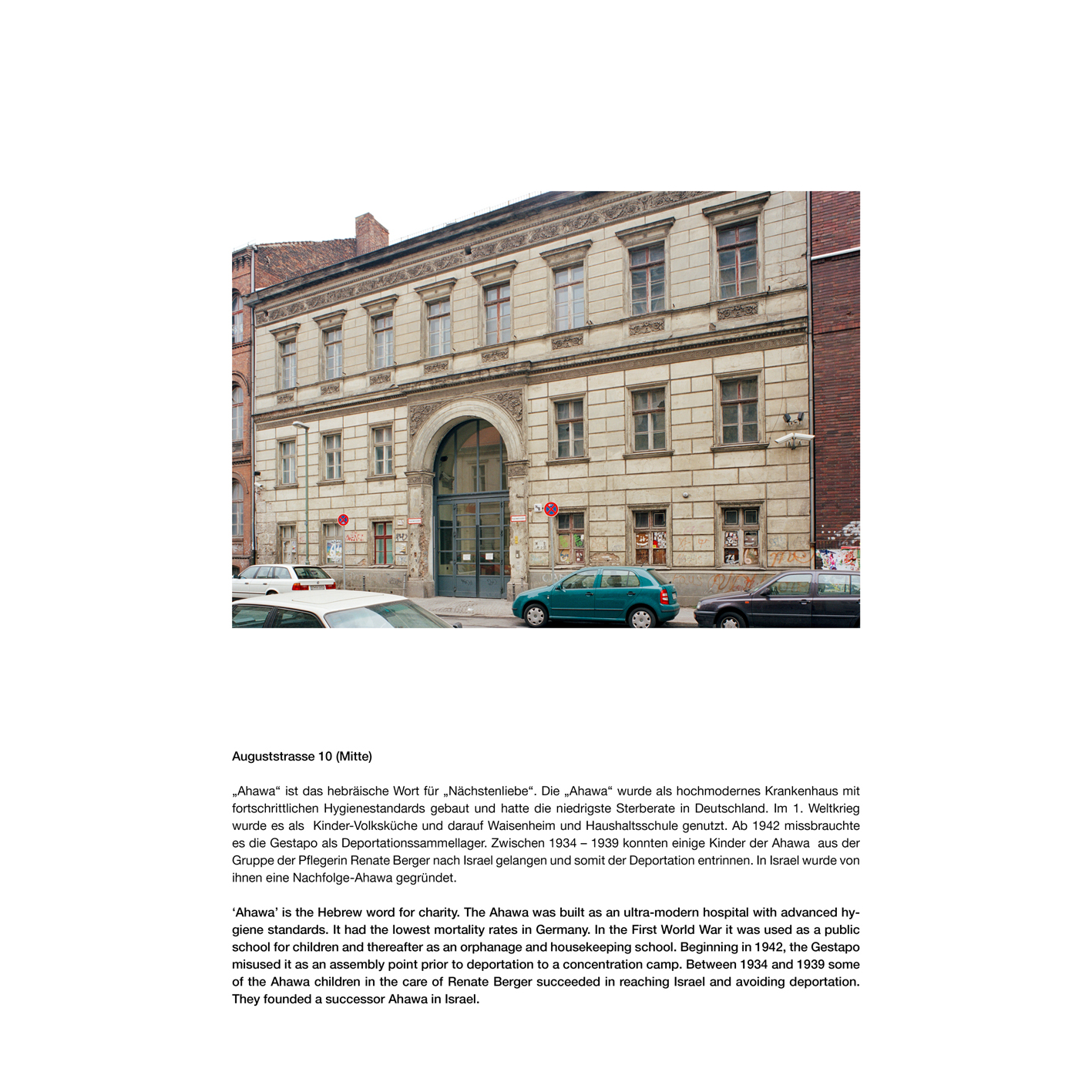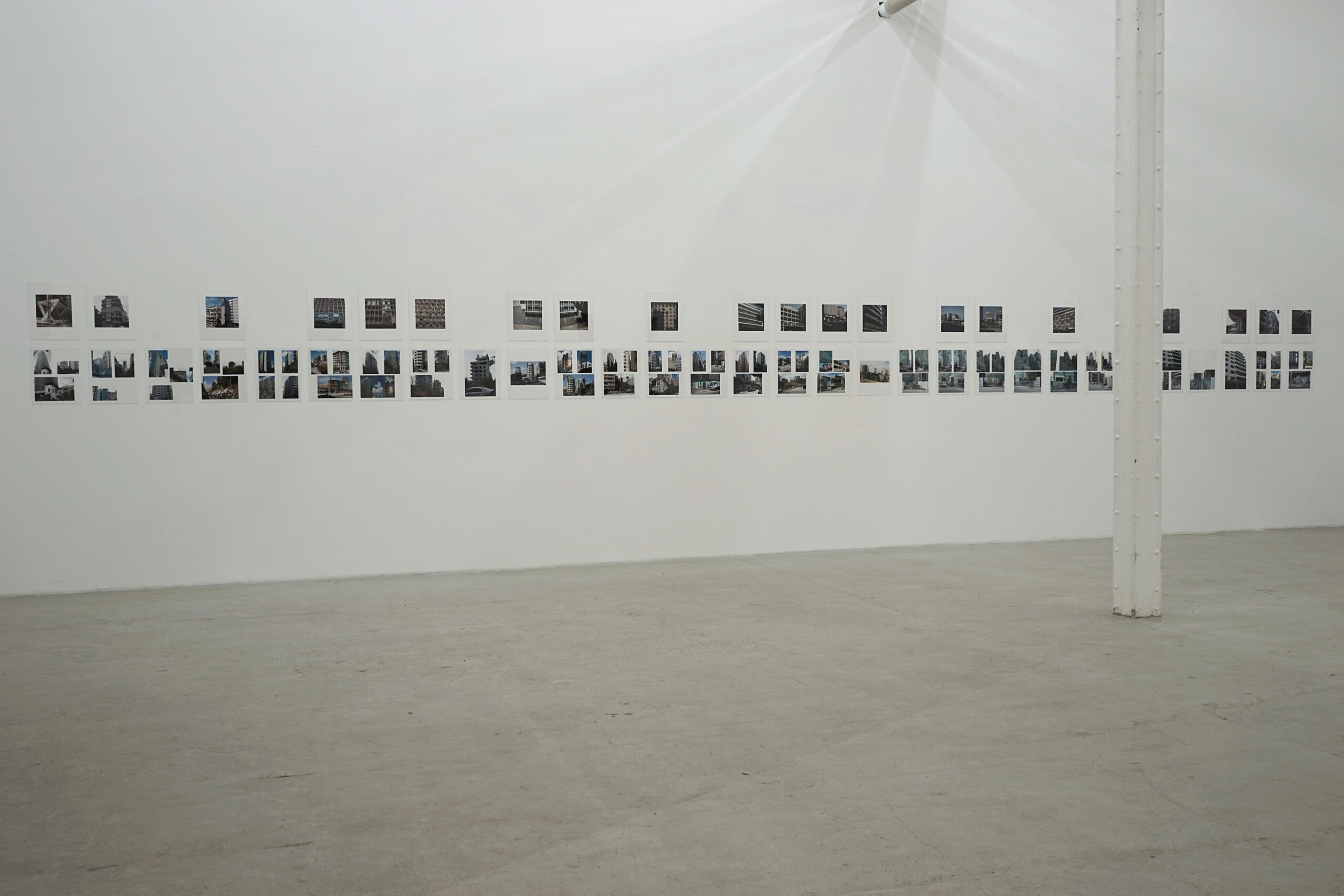
Construction Sites (1-17, 43-55)
( bottom row)
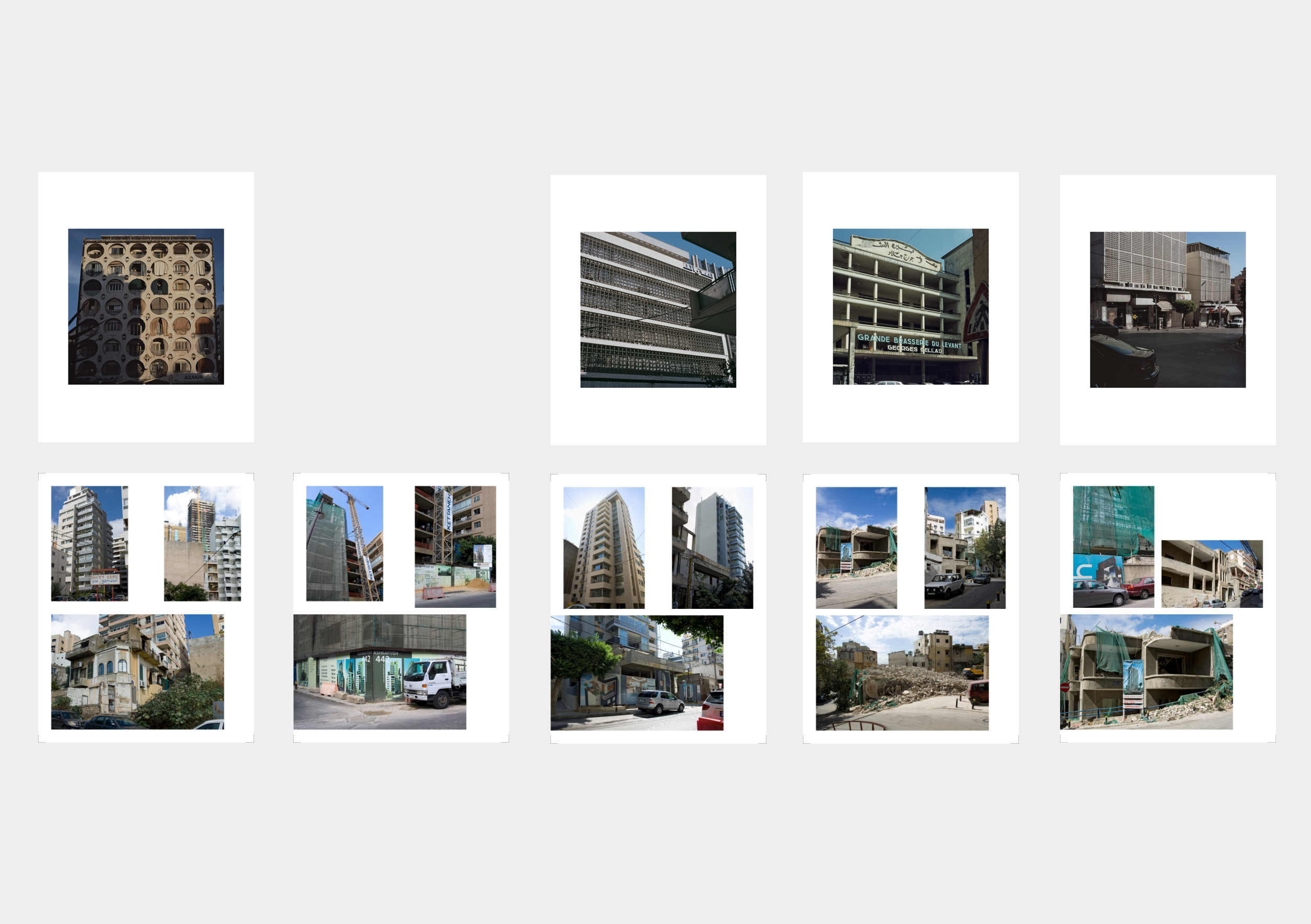
bottom row: Construction Sites (1-17, 43-55) 2013 35 x 28 cm 30, 21 analogue photographs, inkjet print on Hahnemühle photorag
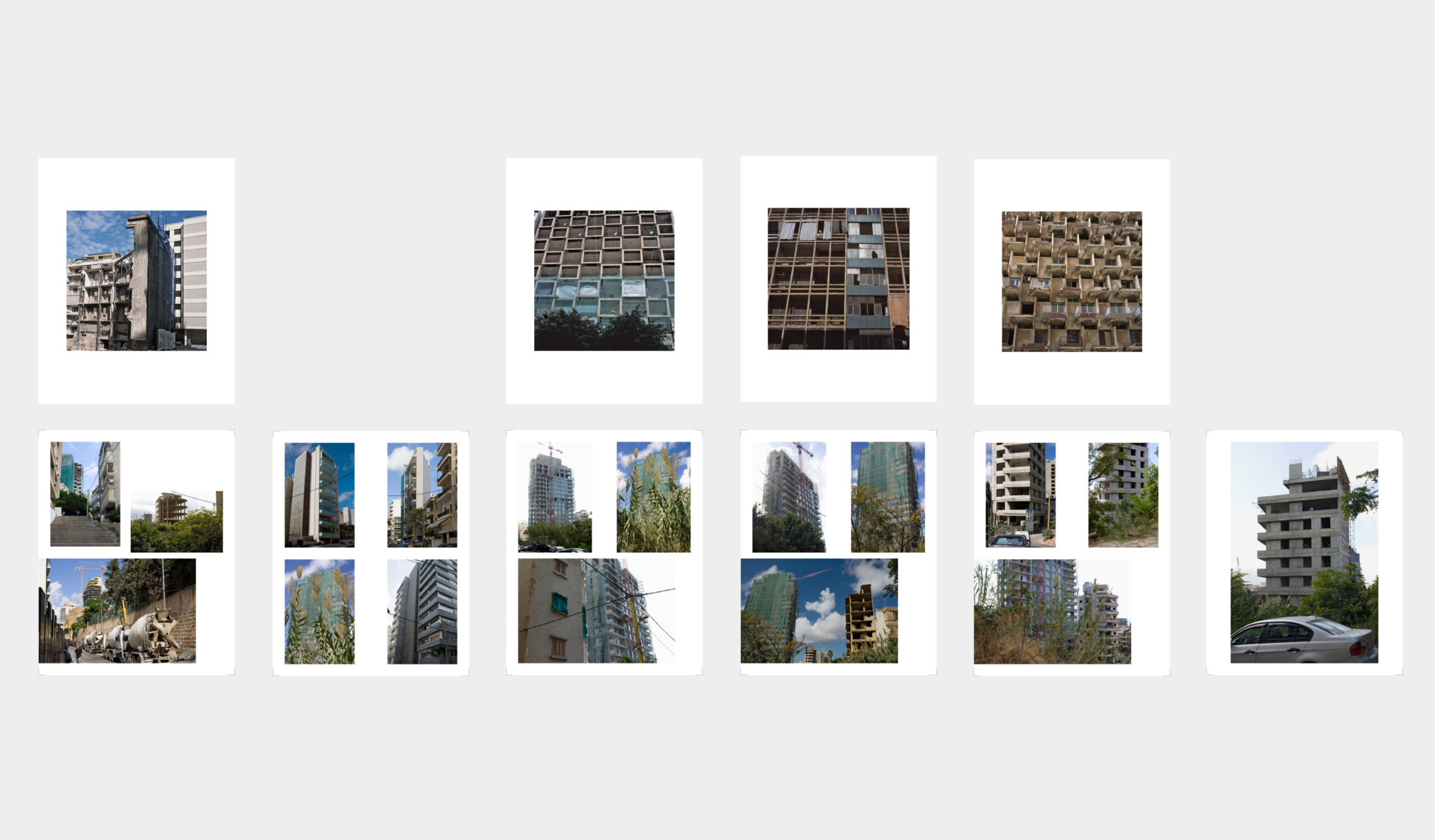
bottom row: Construction Sites (1-17, 43-55) 2013 35 x 28 cm 21 analogue photographs, inkjet print on Hahnemühle photorag, digitally assembled

bottom row: Construction Sites (1-17, 43-55) 2013 35 x 28 cm, 30 analogue photographs, inkjet print on Hahnemühle photorag, digitally assembled
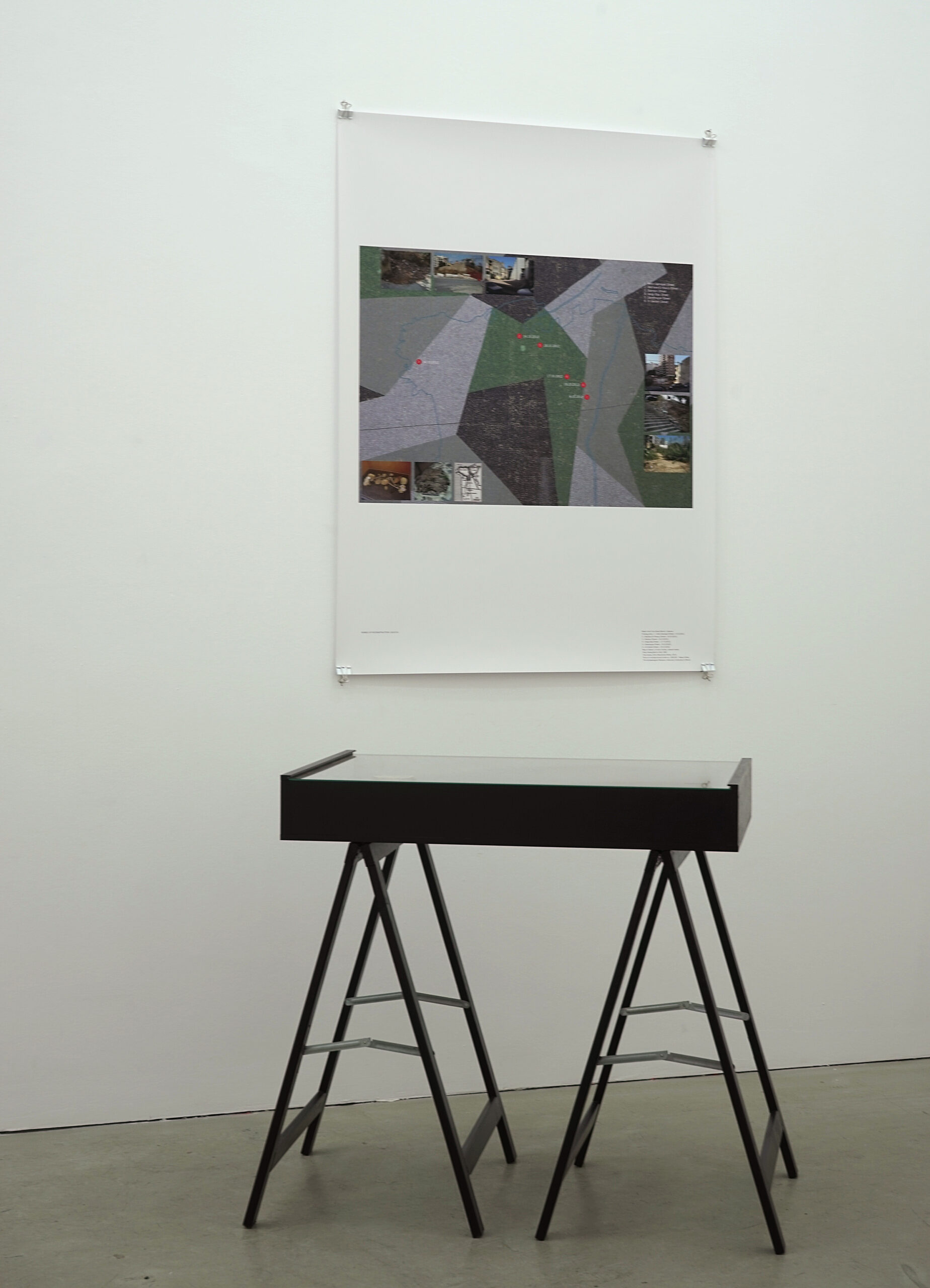
Vitrine (56 x 85 x 9 cm)
Achtzehn Scherben (eighteen shards)
Poster, digital montage, inkjet print
130 x 95 cm

Vitrine (56 x 85 x 9 cm)
Achtzehn Scherben (eighteen shards)
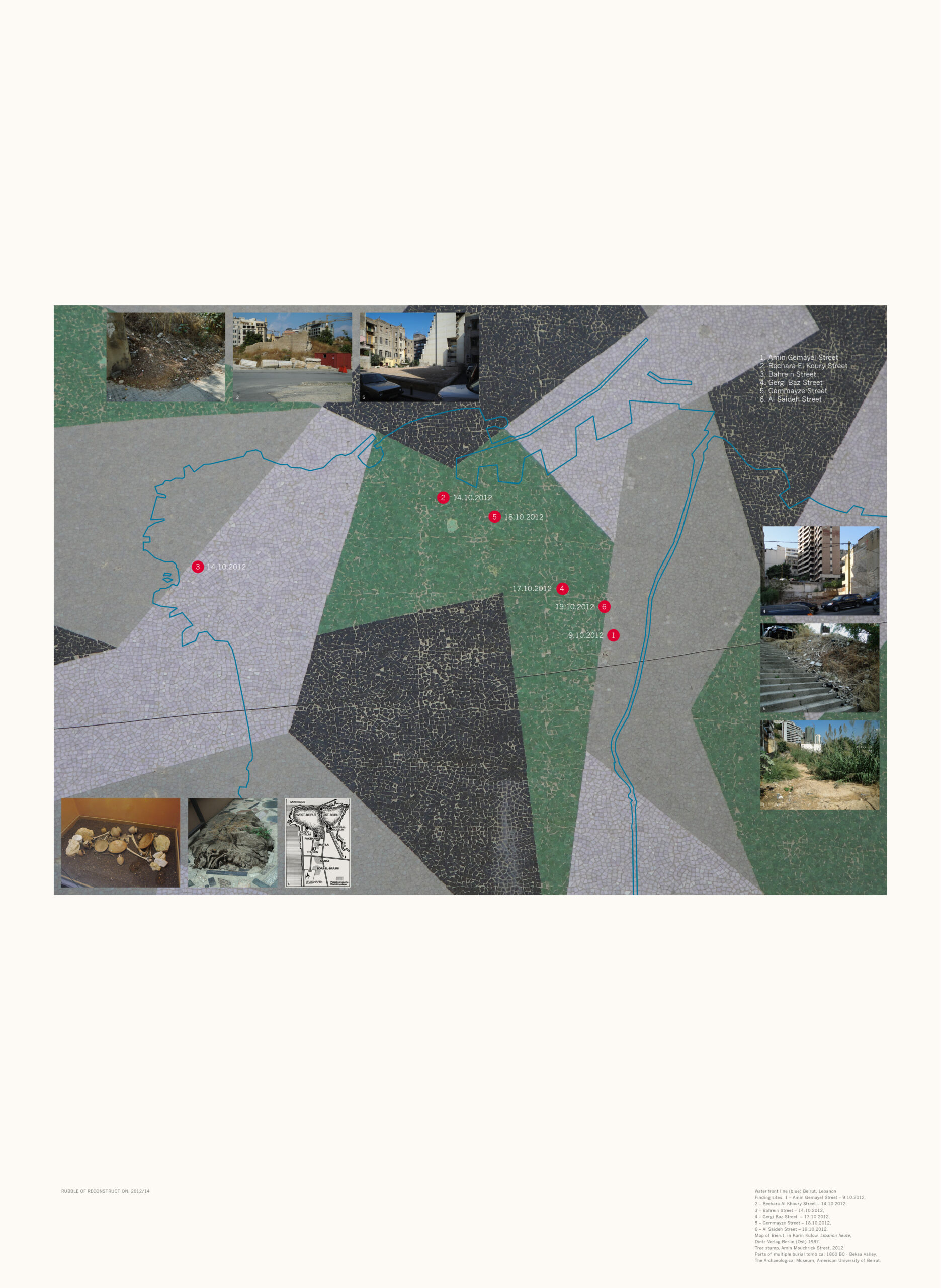
2012 / 2013
Poster, digital montage, inkjet print
130 x 95 cm
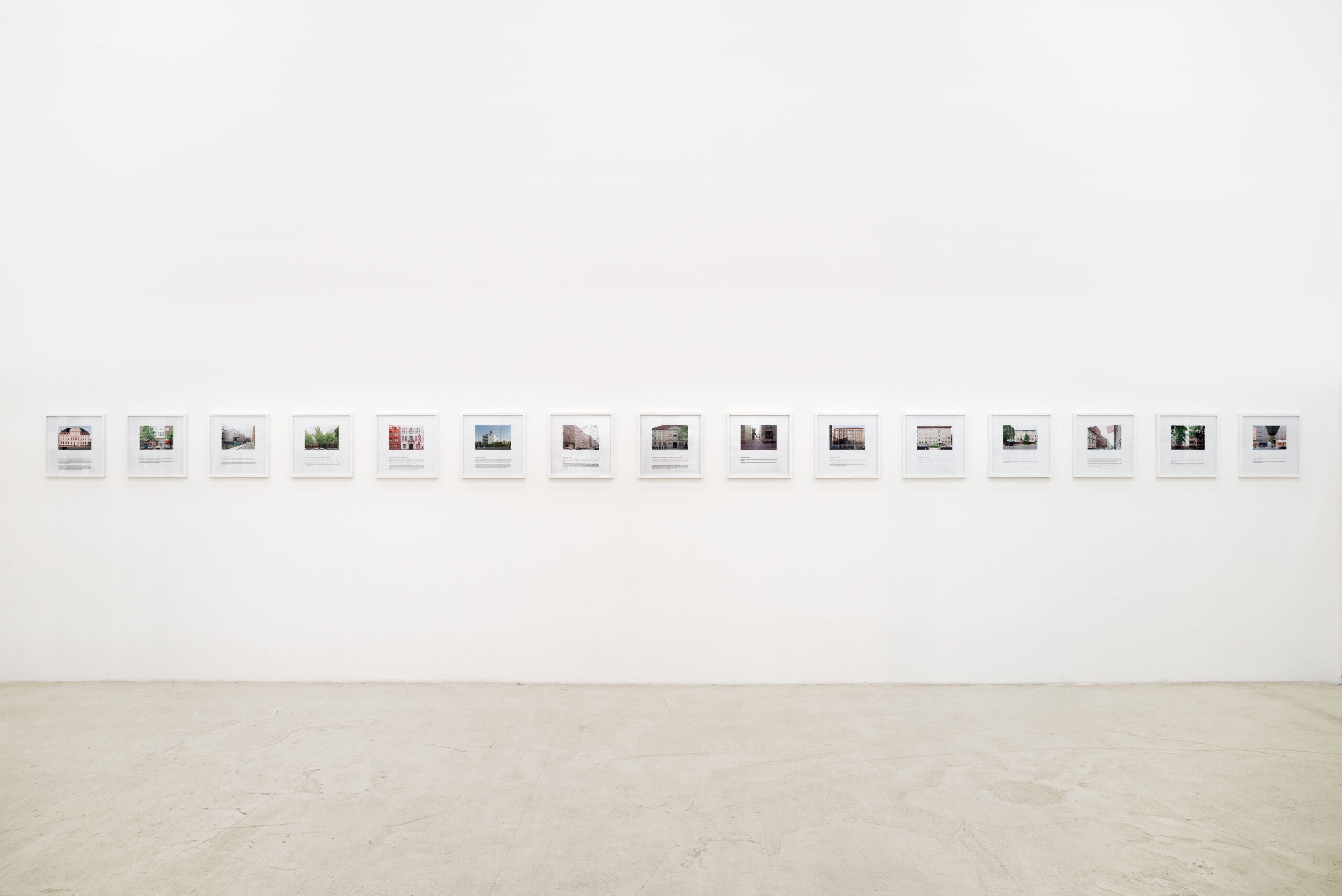
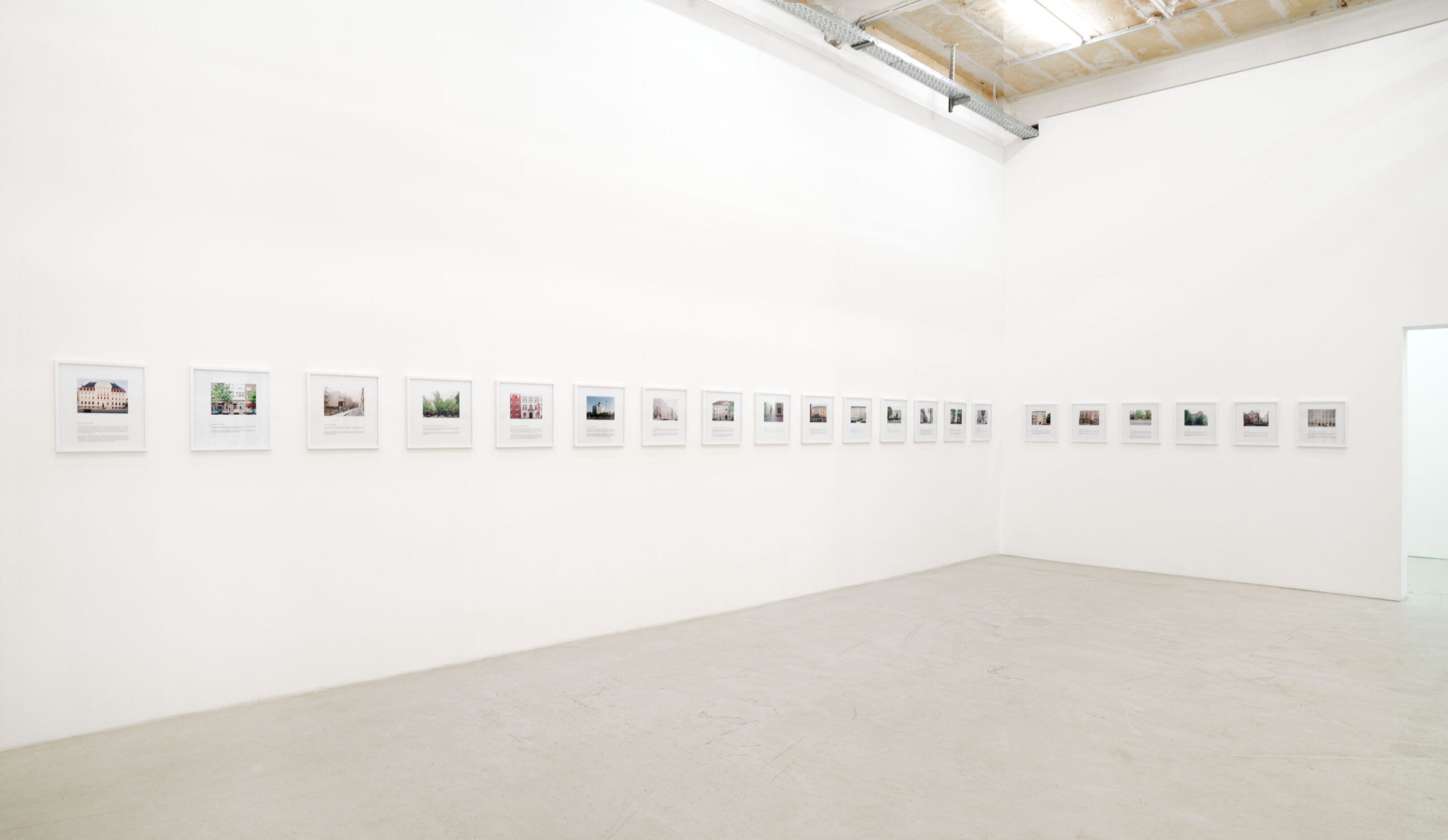
40 x 40 cm, Framing: beech, light white
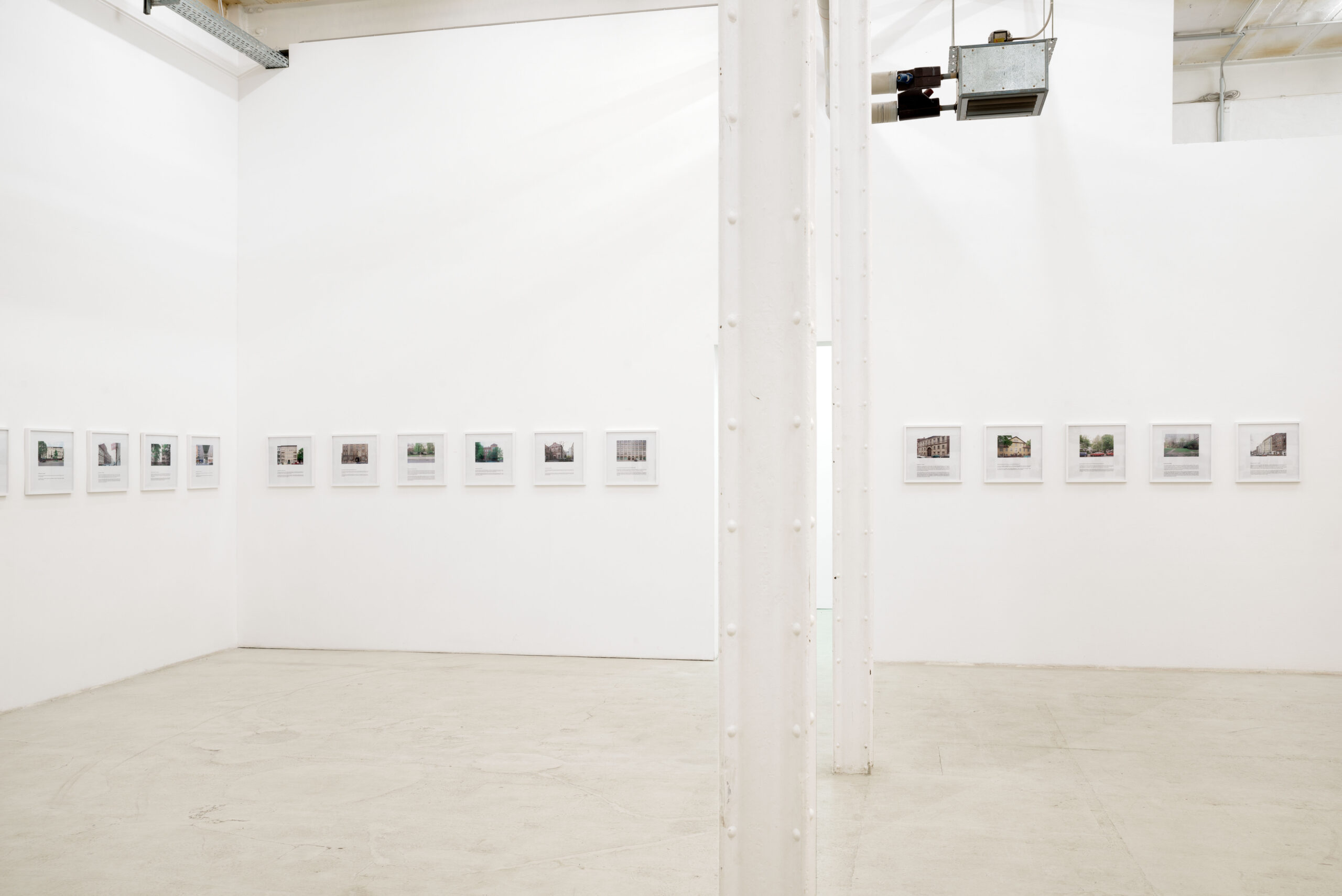

40 x 40 cm
Framing: beech, light white

2014
HD-Video, 16:9, colour, 45 Min.
Doris Frohnapfel and Ina Wudtke consider photography (both their own photographs or photographs that they collected) as a medium of research into specific themes. Through photography, both artists investigate urban spaces and search for traces as well as secure traces in layers and sediments of biographies, places, cities and territories. While Wudtke‘s photowork Gaps in Berlin from 2003 documents places where after the end of the cold war in Berlin former Jewish institutions were located, Doris Frohnapfel examines the city of Beirut twenty years after the Lebanese civil war.
Doris Frohnapfel develops her projects based on photography as a medium of documentary with its inherent shifts in the context of the history of photography and pictures and an interest in transmedial documentary methods. Pictures, texts and materials that were found, detected, ascertained, researched, excavated and picked up build the supplements and foundations of the artistic process of visualization. Thus methodical and didactical forms are produced that cannot be dismissed and that do not derive from pedagogical and/ or scientific education. On the one hand they are about amalgamating places, biographies as history and stories, on the other hand they are about methods of simultaneity in order to form new energetic (exhibition-) spaces.
As in the project about the European borders in a changing European background (Border Horizons 2002- 2005) heterogeneous forms of research again are building the foundation in the series of Mediterranean Coordinates (2009-2014). Within the engagement with the adjacent Mediterranean space in its context, the research and photographs in Beirut occur.
Doris Frohnapfel‘s works Confrontation Sites, Constructions Sites and Rubble of Reconstruction were made in 2012/2013 during two stays in Beirut. A series of photographs shows buildings and facade details from a pedestrian‘s perspective and that of a standard lens. In the Mediterranean city of Beirut, throughout the twentieth century architectonically coined by the Ottoman Empire (until after the end of the first World War) and the French mandate (following), the Independence (1943), and modernity, partly destroyed by wars like the civil war (until 1990), one can now see massive realisations of city and buiding plannings going on. As so often in periods of „reconstructions“ after a war and during the sudden transformation towards a 21st century „boom town“, many historic buildings, as well as planned and realised city structures do no longer correspond to the calculations and transactions of the rising ground prices and therefore are reliquished to eviction, disposal, vacancy and decay.
Out of these observations has grown a collection of broken fragments from demolition sites in Beirut, analogous to a collection of German and Italian rubble. In a vitrine this demolition waste is on sight: numbers link them to the spots where they were found and a poster is locating these spots on a city map. Another photo series shows construction sites and is composed out of photographs that were realised on a date specific photo session (October 2-7, 2013) in Beirut.
Ina Wudtke‘s video The 360,000-Euro-View (2014) consists of one take – a view on the tv tower out of the window of her former apartment in Berlin. Wudtke combines the view on Berlin‘s famous icon with a personal narration by a voice over, in which reflections on economic structures and individual life circumstances, artistic production and contemporary politics and urbanism intertwine. The privatisation of the former GDR properties are the point of departure for a reflexion about the grown city structures that do not correspond any more to the calculations and transactions of the rising ground prices and that are reliquished to eviction, disposal, vacancy, decay and demolition. Next to privatisation and commodification of the former public spaces, Wudtke also reflects the symbolic allocations of the city that is not only indicated by the mobilisation for the reconstruction of a castle in the city center of Berlin.
For the first time, Wudtke‘s photo work Gaps in Berlin (2003) is presented in the form of colour photo prints. The places they depict were the locations of public Jewish institutions in Berlin: schools, hospitals, synagogues, private organisations, companies and businesses. Since the Nazi era, they are erased from the cityscape and left a visible or unvisible gap. The photographs document what was on these particular places and who was using it as of 2003. Every photo is accompanied by a short text indicating the address of the former owners and the current occupants.
In her video monologue of The 360,000-Euro-View, Ina Wudtke, who often incorporates personal references into her body of works, refers to her work Gaps in Berlin. The 360,000-Euro-View deals, among others, with the issue that former places of displacement and fallow lands meanwhile haveturned into present objects of speculation.
Ina Wudtke works with artistic, musical and curatorial approaches that converge into exhibitions, installations, photos, videos, music and text productions. Her works involve issues of gender, identity, work, sound, housing and the city. Beginning of the 1990s she worked mostly on extended photographical portrait series that she presented in the form of installations. These installations were inspired by her work as a dj transferring techniques like mixing, serialism and re-representation into the art context. These strategies originated in what the leading British theoretician Paul Gilroy has aptly called „the black atlantic“. In a sense, the work Gaps in Berlin (2003) is a portrait series in its own right, as it shows buildings as traces of murdered Jewish Berliners. At first presented as a digital text- andphoto-animation this work represents a starting point to Wudtke‘s current video works.

